I grew up with vinyl LP's in the 60s and 70s but by the mid 80s I embraced the new CD revolution and sold my LP's. However recently my teenage son started buying vinyl LP's even before we had a turntable. I got him a NAD 5120 for Christmas, which needed a little work but now plays very well with a modest Audio Technica AT95 cartridge.
Our vinyl collection has grown and grown, some new but mostly old copies from charity shops, record stores and eBay. Often with purchases from charity shops ( thrift stores in the US) the records might be in poor condition. Always worth inspecting the disc out of its sleeve to see if it has any serious scratches. If it does its probably worth giving it a miss, but if its just dirt or grease these clean up very well. Its fun browsing boxes of old LP’s again, and if the charity makes some money then even better. However even apparently clean records sometimes "skip". This can be due to scratches but if the skip is a single one off i.e not preceded or followed by the clicking of a scratch, its probably some dust trapped deep in the groove.
Initially i got one of those carbon fibre record cleaning brushes , and these work well, but some records are really too dirty for these to make much impact.
 |
| A sink and a new clean 100% bristle paint brush |
I looked into various record cleaning systems and you can pay serious amounts of money for a record cleaning machine. I then read some articles by people who routinely cleaned their vinyl in the kitchen sink . This intrigued me, as now that I'm a reborn vinyl addict, I'm not quite as precious about audiophile matters as i once was and quite like to see some popular HiFi beliefs debunked.
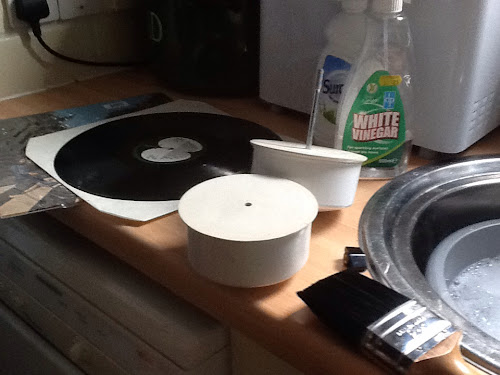 |
| LP label protector |
A key thing with washing records in the sink is ensuring that the labels remain dry. A number of devices exist which clamp around the label, keeping it dry, and leaving you free to wash and rinse the vinyl. I got this
eUFOnious device from a seller on eBay in the US (
nkcyonitz) ,and has worked well. Two halves clamp around the label with a central bolt passing through the hole. A small handle screws on to hold it tight the rubber seal keeping the water from the label area.
 |
| Record with signs of dirt |
Once the record is in place i run a bowl of warm water, add a very small amount of washing up liquid and a splash of white vinegar ( i live in a hard water area). I then submerge the record in the warm soapy water, then wash it carefully using a high quality bristle paint brush, working the warm soapy water along the groves in arc movements around the surface. I repeat this for both sides, sometimes repeating again. I then run cold water from the tap and thoroughly rinse the whole surface of both sides, allowing plenty of water to wash over the surface. Finally tilt the lp so the majority of water runs off. At this point the LP surface is very clean but still has some water in the grooves.
 |
| In the clamp the lp cannot touch the work surface |
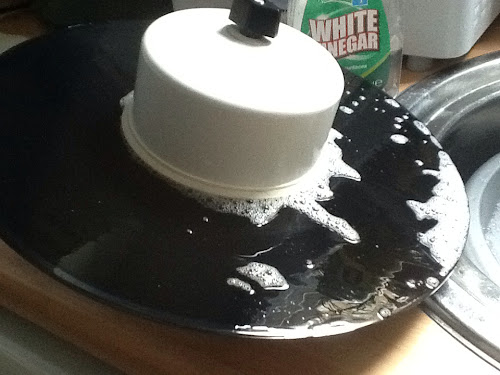 |
| After working warm soapy water with the brush |
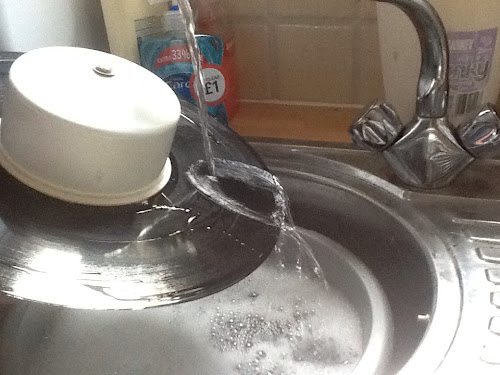 |
| A good rinse all the way around |
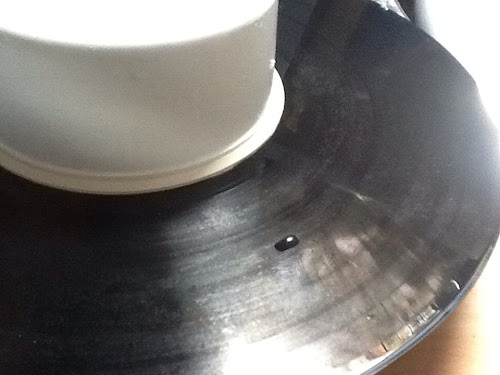 |
| Much cleaner |
I then give the album a spray using a mixture of deionized water I get from my local hardware shop, with a splash of ethyl alcohol. I use an old hand pump that had a window cleaning product in, which I have thoroughly cleaned and rinsed out first. It creates a saturating mist. Once I've soaked both sides with the water/alcohol spray, I then remove the clamp and , holding the lp edge between my palms, give it a gentle wobble to shake off any excess. The record is then stacked carefully on my draining board.
 |
| Drying afterwards |
Once dry i sometimes give it a gentle wipe with a micro fibre cloth to remove any final water droplets.
Often records come up good as new. This certainly seems to remove dust, grease and most of the smaller particles which lodge in the groove and cause skipping. Keith - the maker of this contraption believes that the gentle warming of the record by the water, frees dirt due to thermal expansion.
While scratches cannot be made good, often skipping down to dirt rather than damage i have found. Occasionally a persistent skip will resolve itself with playing or with by nudging the offending piece of dirt with a slightly stiffer bristled brush, i have a small brush which came with a shaver. I find carefully running this over the area of the skip usually works, if you angle it against the rotation of the lp you can feel it resist the dirt at that point til finally the dirt gives.
Im sure many audiophiles are aghast at this method, but I’ve used it to clean several hundred LP’s and it works very well and is pretty cheap. Its also a very satisfying thing to do.








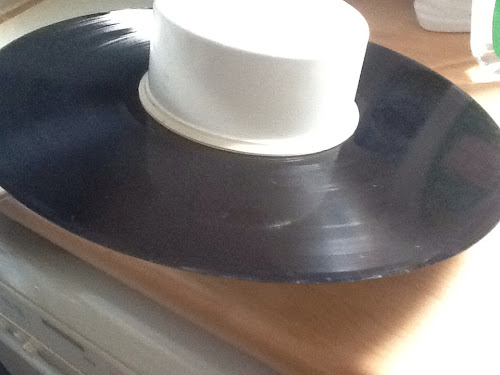
Comments